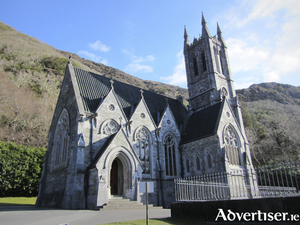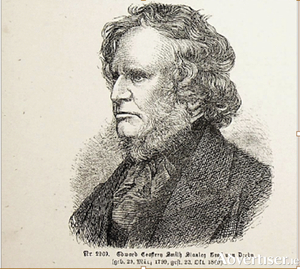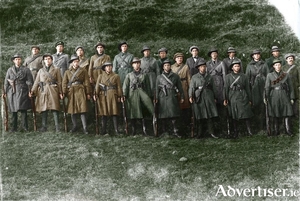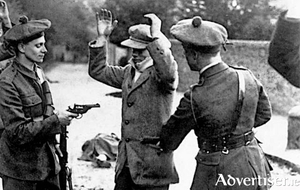Search Results for 'the Freeman'
14 results found.
The Connaught Telegraph – St Patrick's Day 1830

On this day, 193 years ago, Frederick Cavendish launched the Connaught Telegraph in Castlebar. Three days later, the Freeman's Journal noted that the paper's first edition 'evidences a great deal of talent in its conductors.' Sometime after the death of Cavendish, it came to be understood that the Connaught Telegraph was founded in 1828. This error was not subsequently corrected.
‘A pale granite dream, afloat on its own reflection’

Mitchell Henry’s final days in Kylemore were sad ones. His adored wife Margaret had died at 45 years-of-age, and rested in a simple brick mausoleum in the grounds of his palatial Kylemore Castle. His political life, into which he put a great deal of personal effort, advocating on behalf of all Irish tenants the rights for them to own their own land, was out manoeuvred by Charles Stewart Parnell and the Land League. Henry described the Land League methods as ‘dishonest, demoralising and unchristian’. He probably was not surprised to lose his Galway seat in the general election of 1885. He blamed ‘Parnalite intimidation’.
Tragedy at Annaghdown prompts a strange fairy visit

‘My father had a sister Bríd. She was a beautiful woman when she was young. She was friendly with Jack (Seán) ‘ac Coscair, but her father never knew they had spoken a word to each other. It was Bríd who used to rake the fire and close the door each night. She raked the fire and closed the door that night, and she went to bed. She was only a short time asleep when a sinneán (strong gust of wind) came, and the door was blown in against that wall below. ‘Get up, Bríd,’ said her father, ‘and close the door!’
Wolfe Tone’s passionate love affair with Mrs Eliza Martin

One of the most intriguing pieces of theatrical memorabilia in Galway is the poster for two plays, Douglas and All the World’s a Stage, to be performed at Richard Martin’s theatre, Kirwan’s Lane, on Friday August 8 1783. The playbill shows the cast with included Martin himself, his wife Eliza (Elizabeth Vessey) and Theobald Wolfe Tone, who would become Ireland’s famous revolutionary, associated with the French inspired 1798 rebellion.
Persse’s Galway Whiskey

The name Persse is synonymous with Galway, the first members of the family having arrived in this country with the Cromwellians and many of them making significant contributions to life here since, the best known being Isabella Augusta Persse who later became Lady Gregory.
A hero’s welcome in New York for first Galway Line ship

The unfortunate collision of the Indian Empire into the well marked Margaretta Rock in the middle of Galway Bay was a blow to the newly established Galway Line. But by no means was it a knockout. Galway’s vaulting ambition to open a new ‘highway between the old and new worlds’ took on an even more determined energy. The exploitation of steam-power, driving ever bigger ships and faster trains, led to wild speculation as to what could be achieved even from Galway, in the middle of the 19th century.
April Fools and the valley of death - Galway 1921

Major General Henry Tudor arrived in Galway for the weekend on April 1 1921. On Saturday morning he inspected the RIC, then made his way to Lenaboy Castle to inspect the D Company Auxiliaries.
'If one policeman is shot here up goes the town'

By early 1921 Britain’s war in Ireland was not just a moral issue, but a financial one. The sheer expense of solving 'The Irish Question', considering financial reparation for the loss of civilian life and destruction of private property, along with the price tag of the Crown Forces’ operations in Ireland, was staggering.
Galway’s Pro-Cathedral, a building of some significance

At early Mass on Christmas morning 1842, there was a dreadful accident at Galway’s Pro-Cathedral during which 37 people were killed, and many more were injured. Known as the Parish Church, and completed just twenty-one years before, it was by far the largest Catholic church in the town, surprisingly built in preCatholic Emancipation times.


